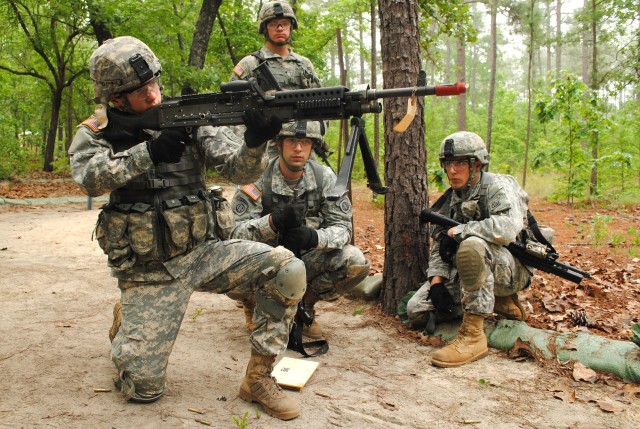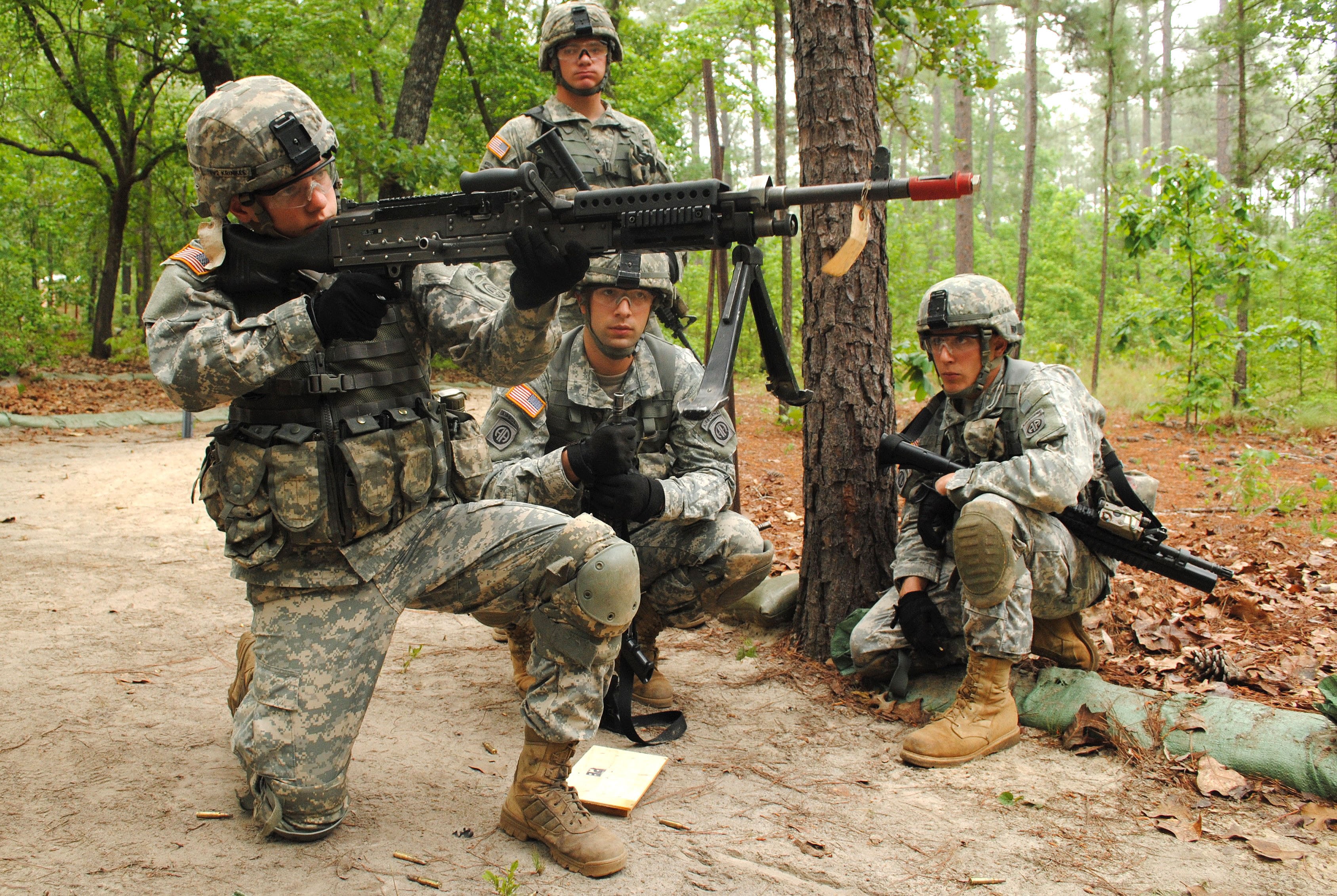
FORT BRAGG, N.C. - Dozens of infantrymen stood in formation as Family members, friends and leadership pinned the Expert Infantryman Badge on the EIB graduates' chests during an award ceremony at Pike Field, May 14.
The majority of the graduates were from 1st and 2nd Battalion, 505th Parachute Infantry Regiment, 3rd Brigade Combat Team, 82nd Airborne Division. The training was primarily run by 3rd BCT paratroopers as well.
The Expert Infantryman Badge was created in 1943 to reward infantryman who show a high level of competency in weapons systems, physical fitness, combat efficiency, and overall
intelligence while in the field.
"The purpose of the EIB training is simply to help the Soldiers perform better while in combat," said Master Sgt. Karl Wilson, of Lowell Mass., the noncommissioned officer in charge of the training lanes for the EIB.
Before the candidates were tested on their combat abilities, they had to undergo several weeks of preparation.
The first parts of the training are the patrol, urban, and tactical checkpoint lanes. In these lanes, the candidates learned combat life saving procedures, techniques for movement while under fire, weapons proficiency, how to call for fire, map reading and their ability to use night vision devices and bore sighting.
The lanes take the majority of the training time and consist of around 30 lanes of individual skill exercises.
After the lanes the candidates must practice marksmanship with their assigned weapon.
Once they are qualified on their weapon their next exercise is the day and night navigation course, where they must use a compass and map to navigate to an unknown point.
On qualification week, the candidates began the first day with an Army Physical Fitness Test where they had to score at least 75 points on pushups, sit ups, and the two-mile run for their age group.
"Surprisingly, the PT test caught a lot of the candidates because they had to score a 75 in every area," said Sgt. Francisco Morelos, of Fresno Calif., an EIB graduate assigned to Company C, 2nd Bn., 505th PIR, 3rd BCT, 82nd Abn. Div.
Next, were the patrol, urban, and tactical checkpoint lanes where the candidates were tested on every area they had previously trained on.
"The timed patrol lane was the most difficult part of the qualification for me even though it was kind of easy I messed up a few times and it ate up a lot of my time," said Morelos. "I had 20 minutes to complete all the tasks and I finished them in 19 minutes 59 seconds."
After the lanes, the remaining candidates took the day and night land navigation test where Morelos said even more people failed to qualify.
On graduation day, 152 candidates remained from the original 790. The final, and most physically demanding test, was the forced 12-mile ruck march, which the candidates were required to complete in less than three hours. The majority of the remaining candidates who made it this far passed, with only a few not making the required time.
Before receiving their Expert Infantry Badges, the graduates were addressed by Command Sgt. Maj. Earl L. Rice, of the XVIII Airborne Corps, who congratulated the graduates and expressed his pride in their hard work and determination during the course. He told them how important this training is to the overall strength of the unit.
"It is important that these paratroopers and Soldiers master individual combat skills before moving into group and squad based skills," said Rice.
For many of the infantrymen who earned their EIB, this is just another stepping-stone on their path to a successful career.
"Now I have my Combat Action Badge, Combat Infantryman Badge, and finally; now an Expert Infantryman Badge," said Morelos.

Social Sharing